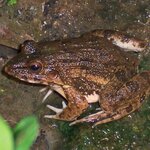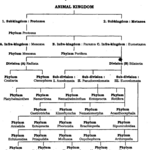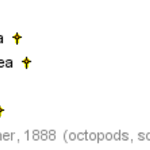Evolution

This is the first posting on the Simulating Life's Origins column. Not much more to say here except to test whether this feature is working!

Microbiologists have discovered a central metabolic pathway in microorganisms and the microorganisms use this pathway to survive under extremely salty conditions, like the Dead Sea.
The Dead Sea is not dead, in the science sense. Many microorganisms which inhabit it belong to a group of salt-tolerant archaea (from the Greek archaĩos, from which we also get"archaic“). Archaea are among the most primordial life forms on earth and have managed to survive in extreme environments.
Scientists have long known that salt-tolerant archaea make use of various organic compounds as a…

Even for a physicist, this is bad: Larry Moran, in preparation for the appropriate dose of ridicule that this situation deserves, quotes physicist and pop-science author Paul Davies:
Another physical object with enormous longevity is DNA. Our bodies contain some genes that have remained little changed in 100 million years. An alien expedition to Earth might have used biotechnology to assist with mineral processing, agriculture or environmental projects. If they modified the genomes of some terrestrial organisms for this purpose, or created their own micro-organisms from scratch, the legacy…

A 30,000-year-old finger bone found in a cave in southern Siberia came from a young girl that was neither an early modern human nor Neanderthal, but instead belonged to a previously unknown group of human relatives who may have lived throughout much of Asia during the late Pleistocene epoch, according to new research (Reich, D. et al. Nature 468, 1053-1060 2010.
The fossil evidence consists of just a bone fragment and one tooth but DNA extracted from the bone has yielded a draft 3-billion-letter nuclear genome sequence (Krause, J. et al. Nature 464, 894-897 2010), enabling the scientists to…

Recently, a question kept me wondering: Why aren't there salt water frogs? This is an honest and humble personal question because I have not really done any research on this and primarily because I have not seen any frog on my occasional trips to beaches. Moreover, by this question I mean, why aren't there frog species living entirely on salt water? That is from egg to tadpole to adult frog?
There's osmosis. Well okay, water flows naturally from low salt concentration to a high concentration, causing a gold fish to die from shrinking of cells when placed in salt water and a clown fish to die…
580 million years ago, life on Earth began a rapid period of change called the Cambrian Explosion, defined by the birth of new life forms over many millions of years that ultimately helped bring about the modern diversity of animals.
While fossils can help palaeontologists chronicle the evolution of life since the Cambrian Explosion, drawing a picture of life during the 3 billion years before the Cambrian Period is challenging because the soft-bodied Precambrian cells rarely left fossil imprints; early life forms did leave behind one abundant microscopic fossil, DNA.
Because all living…

Researchers say they have uncovered a clue that may help to explain why the earliest evidence of complex multicellular animal life appears around 550 million years ago, after atmospheric oxygen levels on Earth dramatically rose, from 3% to the modern day level of 21%.
The group says humans share a method of sensing oxygen with the world's simplest known living animal, Trichoplax adhaerens, suggesting the method has been around since the first animals emerged around 550 million years ago and helps us understand how humans sense oxygen and how oxygen levels drove the very earliest stages of…

What is the basis of distinction in each of the four steps?
This is the five kingdom classification given by scientist Whittaker (1969).This scheme was based on -
Structure of Cells - {prokaryotic or eukaryotic }
Structure of Organism - {unicellular or Multicellular}
Mode of nutrition - Photosynthesis in green plants, absorption in fungi and ingestion in animals.
The Kingdoms are further classified into sub groups at various levels as follows.
Hierarchy Kingdom
…

Our body is a constant reminder of the fact that we share our origins with many other species, as Neil Shubin describes it so well in his book “Your inner fish”.
The basic plan for members has remained the same in all existing species and this ever since a strange kind of fish called tiktaalik was literally doing pushups with his proto-forelegs in shallow waters. The common plan for members has since been the following: First one bone, corresponding to our thigh or arm, then two bones corresponding to our leg or forearm, then a bunch of small bones corresponding to our ankle or wrist, to…

Some people might suggest the nautilus as the ancestor of modern squid, since they're the only "ancient-looking" cephalopods most of us have seen. But the lineage that led to modern nautiluses and the lineage that led to modern squid diverged long before there was anything that looked like a squid.
Here is a tree of evolutionary relationships within the Cephalopoda, from the magnificent Tree of Life website.
Others might claim ammonites as the ancestors of squid, but as is clear from the above tree, they're not a much better candidate than nautilus. Ammonites and coleoids were on different…